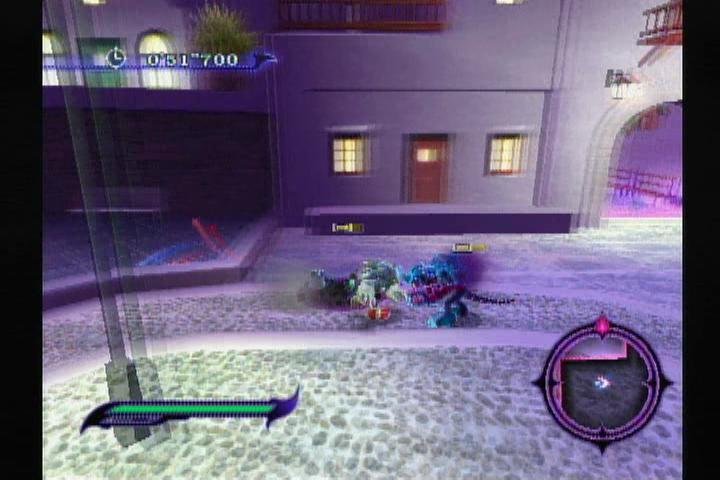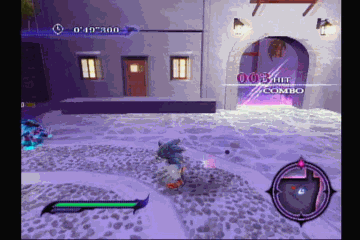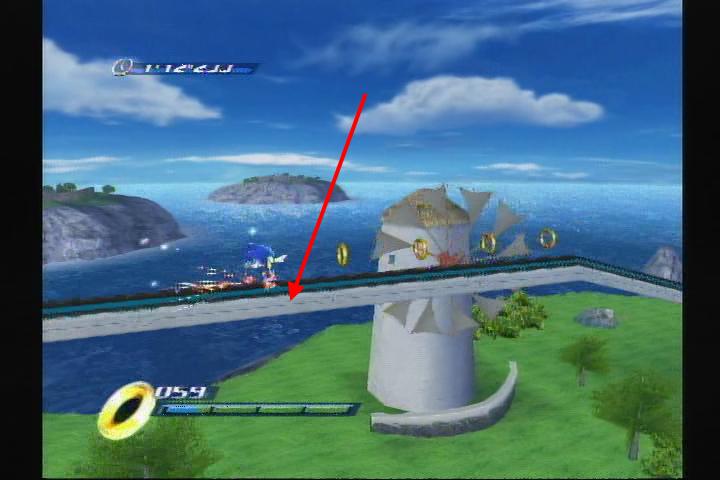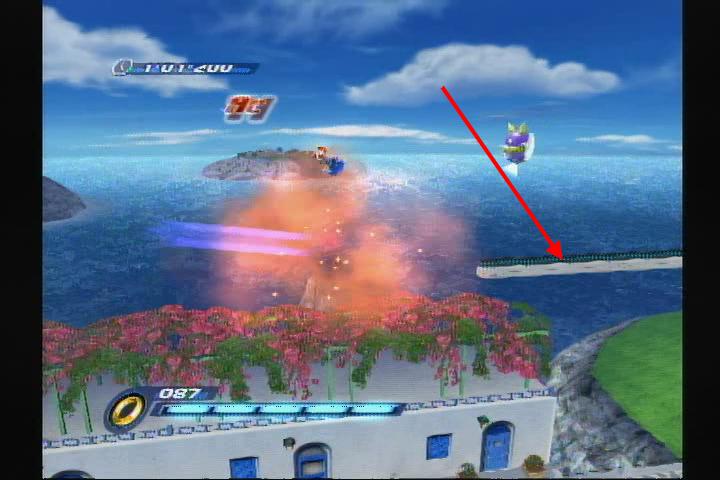Hello! After reading the "How do I get my question answered?" guide, and using the Search function, I still wasn't entirely sure as to where I should've put this post. Hopefully, you folks won't mind helping me out.
Right now, I have an AVI which was captured from a standard resolution audio/video source (composite RCA cables). It is running at 29.97FPS, and is interlaced. I'd like to de-interlace the video. However, I apparently need a dummy's guide to it, as I've tried various filters in VirtualDub, Avidemux, creating AVS scripts, and nothing is working for me. Although I use the guidelines on the plug-in authors' sites, there must be other steps I'm unaware of. I've been trying to figure out this process for hours now, and I just don't know what to do.
Although I do know how to use DScaler to improve my personal viewing, I want to permanently de-interlace the video so it can be viewed in any application (e.g., Media Player Classic, VLC) normally.
The footage is from a video game, so there is a lot of constant, fast movement. It was captured from the video out ports on a Samsung DLP through an Adaptec GameBridge adaptor (which works through USB). I am trying to re-encode the video with the XviD format, hopefully making it de-interlaced.
Please help if you can. Thank you!
+ Reply to Thread
Results 1 to 30 of 34
-
-
In VirtualDub first try the built in Deinterlace filter set to Discard Field 1 or Discard Field 2. That will leave you with a half high image so follow that with a resize to your desired final output size. That should get rid of all comb artifacts but nearly horizontal lines will look jagged.
Next try Donald Graft's Smart Deinterlace filter instead. Set it to "Edge-directed Interpolate". That usually works a little better but maybe not with a video game.
The more sophisticated deinterlacers run in AviSynth. TempGaussMC_beta1() is current the best but it is very slow -- 1/50 the speed of the above mentioned deinterlacers. -
Thanks for your reply!
The first method produced the nicest looking video, but because it's high speed, the discarded data really shows, making the footage look laggy. The second method (Smart Deinterlace) still leaves apparent lines behind, but everything moves smoothly. Of the two, I think I prefer the second.
I saved the video with the Smart Deinterlace filter once, opened it, and then saved it again. The end result is a video that was de-interlaced twice, and it looks pretty good. Is this an okay way of doing it, or should I abandon this practice because of potential complications I haven't seen yet?
If it helps, here's the file (this is just a short clip of game footage, not from a movie or anything, so I think it's okay to link it here): http://sharebee.com/b90039a1
Unless you have any other suggestions, I'm willing to accept this. High quality video isn't my biggest concern, as smooth movement is more important. Thanks so much for your help! Your post helped me do what hours of research didn't! :D -
If you want smooth movement try using VirtualDub's Bob Doubler filter. That will convert your 29.97 fps (really 59.94 fields per second) video to 59.94 frames per second. Be aware that some computers may have problems playing video with that high a frame rate.
I just downloaded your video. Although it runs at 29.97 frames per second, each pair of frames contains the same picture. So the effective frame rate is only ~15 fps. Upload a short segment of the original video and I'll take a look at it. -
Here's a clip without any filters applied: http://sharebee.com/68413734
I'll check out the filter you mentioned. Do I simply load it and encode the new AVI, or are there any special settings I should use?
EDIT: Oh, and should I use just the Bob Doubler filter alone, or should I be combining filters? -
That video still looks like it has been mishandled somewhere along the line. It has field blurring (double and triple exposure) and odd temporal problems.
What are you capturing with? You need to provide a sample straight out of the device (DV AVI? MPG?) because the last file you uploaded still has major problems. -
It's being captured with an Adaptec GameBridge, which is one of these:Originally Posted by jagabo
http://www.amazon.com/Gamebridge-AVC-1400-USB-Cnct-Xbox/dp/B000DLBAFU
Since it's a very simple device that feeds composite video through USB, I understand that I'll have problems regardless. That's what the video looks like even if I don't encode it with XviD, so if I were able to provide you uncompressed footage, it really wouldn't look any different, unfortunately.
Usually, when people use the GameBridge for its other intended purpose (playing games on a monitor without a television), they do so through DScaler to deal with all of the issues. It's a crappy device, but it's all I've got! So, I know good quality can't be had, and that's all right. -
The multiple exposure look might be intentional on the part of the game developers:

But the jerkiness is probably a capture problem.
Add the Bob Doubler filter. Leave it at Bottom Field First and Bob. Step through the video frame by frame (really field by field in the output pane after the Bob filter). For the fist ~130 frames the video you will see normal motion. As a character moves or the camera pans you see nice smooth steps. But after frame ~130 motions of the characters and camera jerk back and forth.
What's appears to have happened after frame 130 (frame 65 before the Bob filter) is the capture device is dropping every other frame and repeating the preceding frame. So instead of frames 1, 2, 3, 4, 5, 6... it is getting 1, 1, 3, 3, 5, 5... Since each frame contains two fields, each taken at different times intervals, the video jerks back and forth. Instead of getting nice sequential fields you are getting 1, 2, 1, 2, 5, 6, 5, 6, 9, 10, 9, 10...

You need to fix your capture process to prevent the dropped frames.
https://forum.videohelp.com/topic157660.html -
Thanks for all the information! I did read that guide, but I already do everything mentioned within it (e.g., disabling anti-virus), and have a powerful computer. Nothing else is running aside from Notepad, not even applications in the background. The machine has a dual core processor and a couple gigs of RAM, along with an 8800GTS. I also have optimized my Virtual Memory settings, have plenty of HDD space, and so on, so forth.Originally Posted by jagabo
The adaptor, unfortunately, is to blame -- I thought of it after reading this entry in the guide, specifically:
The GameBridge has been discontinued by Adaptec, they no longer provide any sort of support for it whatsoever. You can't get new drivers for it, and despite its having sold in fairly big numbers, they have said they're never going to support Vista or any 64-bit OSes with it. It's pretty much a shameful product created by a company that doesn't normally deal with audio/video technology, and they've ditched it accordingly.Originally Posted by Guide
While we're on that subject, you wouldn't happen to know any decent but inexpensive USB or PCI-E capturing devices/cards, would you? I truly am broke, especially after the holidays; I don't have more than $50 to spend. Because of that, I know I'd likely be going from smelly garbage to slightly less odorous garbage, but any improvement is an improvement -- I'm supporting myself on minimum wage at the moment, so I don't have much to spare. -
After being screwed by Adaptec over a driver issue many years ago I vowed never again to buy or recommend anything made by them.
I'm not up on low end video capture devices but if you search for USB VIDEO CAPTURE at amazon you'll see lots of devices in the $10 to $50 range.
http://www.amazon.com/Diamond-VC500-Touch-Capture-Device/dp/B000VM60I8/
http://www.amazon.com/EasyCap-Capture-Adapter-Editor-Software/dp/B001BWU8US/ -
Yeah, Adaptec's A/V stuff is pretty crummy. However, what you've already provided me with -- and your additional insight and explanation into the exact issues -- was extremely informative and helpful. The video I have now is much more watchable, and will serve its purpose. I am very grateful for all of your help. It's priceless. So thank you again!
-
What an interesting thread. Can I jump in?
Low end products like your Adaptec were very consumer-based for children and parents mostly - a quick solution for those that want a capture and don't particularly care about bobs, weaves, combs, etc. - just want a price-friendly capture device that works and that's it. Although it would be a headache to correct, and produce, an efficient encode with this content, it's not something one outside of this forum (and others) particularly gives much thought. They would use some low-end encoder, put it on DvD (as crap if they even notice) and they're done. Adaptec knew this, and would only encounter consumer dissatisfaction from someone like you - a minority who's a bit more advanced.
But even so, even from so-called "expert video companies", I've been screwed before by such devices, particularly from Dazzle (now acquired by Pinnacle) - even with their more expensive products.
I know you're going to hate me, and I know you're broke, but you really get what you pay for when it comes to this. A cheap, and good, solution simply doesn't exist. If you're serious about capturing beyond a passive hobby you'll really need to start planning an investment for the near future. (And yes, at any rate, they're all CPU/RAM intensive and you would need to have your PC hogged for hours on end to get a good capture.)
Good luck, and a happy prosperous New Year. I hate VHS. I always did.
I hate VHS. I always did. -
Oh, no worries. I don't hate you at all for mentioning that. I would really like to get a very good card, but as the only one bringing in money who's getting by on minimum wage, I can't afford to. I have next to no expendable income, and whenever I do, it usually goes to fun yet useful things (like dining out).Originally Posted by PuzZLeR
The amusing -- or perhaps sad -- thing about this is that it isn't just for fun, it's for work! However, my business has provided me with the GameBridge, so I must make the best of it. I might wind up getting a TV input card, though. A fellow in the same line of work has recommended one that doesn't appear to have the same issues with low framerate input.
You as well.Good luck, and a happy prosperous New Year. :) -
Normally I wouldn't recommend this but this may work with your caps: Try VirtualDub's built in deinterlace filter set to Blend. Maybe follow up with a little sharpening.
-
I did try that, but the video didn't look much better. However, I do have an interesting development to note.
Since receiving the GameBridge, I've not used its included software because I've always been strongly advised not to. It isn't very customizable, only encodes in MPEG, and doesn't let you decide where the video will be written to. It's the typical ho-hum software suite.
Out of desperation, however, I decided to try it anyway... and the video quality appears to be superior. Here's a new sample, courtesy of the InterVideo capture: http://sharebee.com/fb212dda
Absolutely nothing else about the configuration has changed.
What do you think of this? I don't know what to make of it. I've used multiple other pieces of software and nothing has come close. Using InterVideo is kind of inconvenient due to the aforementioned lack of options, but I may just deal with it considering how the video looks. And the audio is synced up properly too!
By the by, don't mind all the blocking, I re-encoded it with so-so quality just to make the online file smaller. The original naturally doesn't show all the compression artifacts. -
That clip appears to have been blend deinterlaced. At least it doesn't have the dropped frame problems like the earlier clip. It would have been better to upload the original MPG file. I would try the earlier mentioned deinterlacing techniques in VirtualDub.
-
Okay, I'll upload the original file too. I didn't know if you'd want to download something that big, but here it is (it's over 60MB): http://sharebee.com/5ec16fe8
Here's some clips taken from that, made using your aforementioned de-interlacing suggestions and re-encoded in XviD.
The first uses VirtualDub's built-in de-interlacing filter, set to "Discard Field 1": http://sharebee.com/9a3a1801
The second uses Donald's Smart Deinterlace, set to "Edge-directed Interpolate" (everything else at default): http://sharebee.com/09fe4237
I'm nowhere near as experienced as you, but I think the Smart Deinterlace video looks better. Am I seeing things, or is it better? I am very happy with this if this is as good as it gets.
Thank you again for all of your help, by the way! -
The MPEG file has already been blend deinterlaced. So you don't need to do any deinterlacing in VirtualDub. You might look to see if the capture software has an option not to deinterlace. Then do the deinterlacing in VirtualDub which should work better.
Examining the MPEG file closely, it appears the game is generating 30 progressive frames per second. But the capture device is capturing the fields out of phase resulting in comb artifacts and multiple exposure look when blend deinterlaced. You usually can't control the field order of the capture device but if you can get it to capture without deinterlacing you can restore the original 30 fps progressive frames. That would give you the best image quality and smoothest motion. -
After reading your latest suggestions, I opened up InterVideo's configuration menu. Unfortunately, I can't instruct it to stop deinterlacing. The most I can do is change the region input type (e.g., NTSC to PAL).
It's too bad that it doesn't. The "General" and "Color" tabs just have some very simplistic settings, nothing about interlacing, encoding, or anything of the sort. I researched the issue on Google, and others have asked how to turn off deinterlacing within InterVideo, but it apparently can't be done.

Other applications I've been using, like VirtualDub, don't automatically deinterlace the footage, but you've seen what's come of that in the dropped frames and such.
I am thinking that it may be a good idea to try encoding in a different format with VirtualDub... I will mess around with that. Now that you've shown me how to notice the dropped frames, I should be able to decipher that on my own. -
Try using HuffYUV as the compresssion codec if you are going to capture with VirtualDub (install HuffYUV if necessary). It is fast and suitable for encoding 720x480 29.97 fps interlaced video. Let me know how it goes...
-
Looks like the codec was it, and not the adaptor after all! It's still not the greatest device, but using a different codec in VirtualDub is making a big difference. I used HuffYUV in an almost completely lossless manner -- had "Convert RGB to YUY2 while compressing" checked -- and the video was fine. No dropped frames, and the audio synced properly.
Here's a clip, after I'd run it through the Smart Deinterlace filter, re-encoded in XviD: http://sharebee.com/72c71a86
The only downside to using a lossless codec is that I'm running out of HDD space rapidly. Would you have any other codecs to suggest? I can use HuffYUV if absolutely necessary, but is there something else that's fast with compression? -
Why are you wanting to deinterlace, anyway? This is not suggested for most video situations.
Want my help? Ask here! (not via PM!)
FAQs: Best Blank Discs • Best TBCs • Best VCRs for capture • Restore VHS -
It isn't going to be burned to DVD at any point or viewed on anything other than a computer, and has to be presentable for people who don't know how to use applications like DScaler and VirtualDub.
-
That last video (HuffYUV, Smart Deinterlace) is the best so far. If I'm right about the game producing 30 fps progressive frames and the capture device capturing out of phase you could get rid of buzzing edges by recombining fields.

The thin line on the bridge should be solid (I believe) but the deinterlacing was unable to figure this out (very common). Recombining fields would restore those thin lines. Here are some other defects that recombining should be able to fix:


Have you used AviSynth at all? -
Yadif() will not work as well as a simple phase shift if indeed that's what his problem is. What he probably needs is:
AssumeFPS(25).Telecide(guide=2).AssumeFPS(29.97)
or
SeparateFields().Trim(1,0).Weave() -
Yeah, it's a solid line.Originally Posted by jagabo
I have, but only a little, as it's more advanced than what I'm used to. In the beginning, I was toying around with AVS scripts and things, but I didn't really know what I was doing. Although I was trying to follow guides on plug-in authors' sites, it didn't produce anything for me... I know, however, that no results is my failing and not AviSynth's.Originally Posted by jagabo
What do you suggest I try now? -
Since you know a little about AviSynth make yourself a AviSynth script that looks like this:
AviSource("filename.avi")
SeparateFields()
Trim(1,0)
Weave()
Replace "filename.avi" with the name of your HuffYUV captured AVI file. Put the AVS script in the same folder as the AVI file. Open the script with VirtualDub and step through the video. Do the comb artifacts go away? -
If I use a frame copied to clipboard after loading the AVI with that script, is it an accurate representation? If so, here's a shot from the same area:

-
Actually, that was a "source frame" -- here is an "output frame":

Similar Threads
-
Best IQ possible for standard DVD disc from AVCDH Canon camera source
By littlebob in forum Authoring (DVD)Replies: 5Last Post: 4th Mar 2012, 15:04 -
PAL converted from NTSC source - Ghosting and interlacing
By OngekibouRekka in forum Video ConversionReplies: 7Last Post: 3rd Dec 2011, 13:20 -
Interlacing a progressive video
By loekverhees in forum Newbie / General discussionsReplies: 41Last Post: 19th Aug 2009, 08:51 -
Good Video Explaining Interlacing and De-Interlacing
By Soopafresh in forum Newbie / General discussionsReplies: 3Last Post: 14th Aug 2008, 20:50 -
Help with de-interlacing/sharpening video.
By ziggy1971 in forum Newbie / General discussionsReplies: 20Last Post: 19th Dec 2007, 22:43




 Quote
Quote

